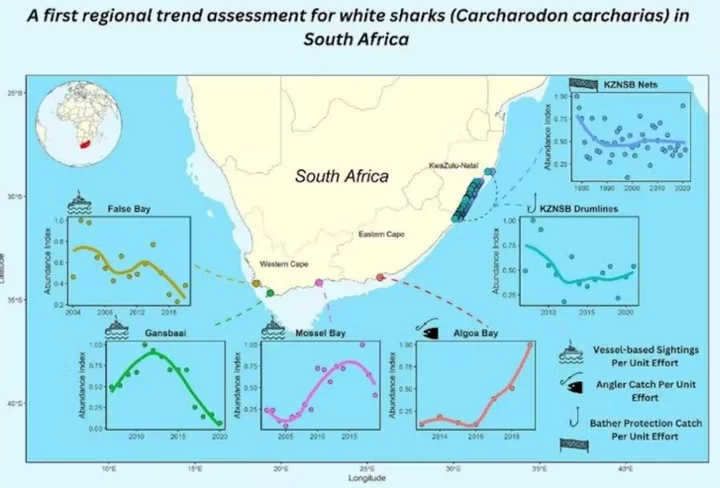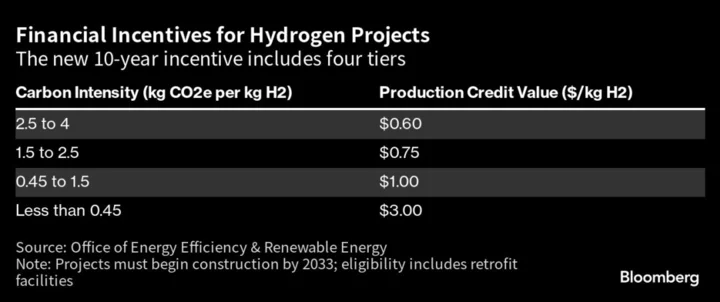COP28 Daily Reports: Sign up for the Green Daily newsletter for comprehensive coverage of the climate summit right in your inbox.
The planet has been so hot in 2023 that even before the year ends, the World Meteorological Organization has declared it the warmest ever recorded.
Global temperatures were around 1.4C (2.5F) above the pre-industrial average for the first 10 months of the year, according to the WMO’s Provisional State of the Global Climate Report 2023. That provides enough certainty to declare it the hottest year on record even with a month left to go, in what is a stark warning to climate negotiators gathered in the Middle East.
“Record global heating should send shivers down the spines of world leaders and it should trigger them to act,” UN Secretary-General António Guterres said in Dubai on Thursday as the COP28 climate summit kicked off. “We are living through climate collapse in real time, and the impact is devastating.”Read More: Biggest Climate Talks Ever Confront Global Chaos and Record Heat
The United Nations agency’s report also includes a bleak rundown of the year’s most extreme climate events, laying out the stakes for the tens of thousands of global leaders, diplomats, business people and activists descending on the United Arab Emirates for two weeks of climate talks.
Greenhouse gas emissions that are responsible for warming the planet reached continued to increase in 2023 after hitting a historic high in last year, the report shows. That helped fuel record-high monthly temperatures on land from July to September and in the oceans from April to September. The increasing heat is worsening extreme weather that is in turn causing deaths and food insecurity as well as displacing millions.
Some of this year’s record heat can be attributed to El Niño, a cyclical phenomenon characterized by the warming of the eastern Pacific Ocean that typically leads to higher temperatures and shifts in weather patterns in many parts of the world. But some of the areas that dealt with unusually high temperatures, including the Northeast Atlantic, do not correspond to typical patterns associated with El Niño, the report notes.
The oceans that cover around 70% of the planet’s surface have absorbed about 90% of the heat trapped in greenhouse gas emissions since 1971. That has slowed the rate of warming in the atmosphere, but also led to higher ocean temperatures, sea level rise, acidification and the melting of ice on land and the seas.
Overall, ocean heat content rose to the highest ever in 2023. The upper layers of the oceans saw a continued warming trend, with the Southern Ocean and the North and South Atlantic registering the highest levels of heat. That, together with the influence of El Niño and the melting of glaciers and ice sheets, contributed to global mean sea levels reaching a record high, according to the report.
The area of sea covered with ice in Antarctica reached its lowest extent on record in 2023, posting the second consecutive year of record-low levels. Arctic sea ice remained below the historic average the year.
Land ice was also impacted by 2023’s record heat. Preliminary estimates show the mass balance of the Greenland ice sheet — a metric that represents the difference between accumulated snow and meltwater runoff — was below the long-term average, though not as bad as the extreme melt seen in recent years. Glaciers in North America and the European Alps weren’t as lucky, though, and experienced severe melt in 2023. In Switzerland, glaciers lost around 10% of their remaining volume in the past two years, while those in the Canadian Rockies thinned three times more in 2023 than they have compared to the annual average over the past two decades.
Beyond the global figures, 2023 was a year of climate catastrophes everywhere. Perhaps the most devastating was climate change-fueled Storm Daniel, which caused extreme flooding in Greece, Bulgaria and Turkey before hovering over the Mediterranean and making a second landfall in northeastern Libya, where 4,345 people have been confirmed dead, 8,500 are still missing and 43,000 have been displaced.
Elsewhere, Tropical Cyclone Freddy became one of the world’s longest-lived tropical cyclones after it formed in early February and made its landfall in Mozambique on March 11. The storm brought heavy rain and flooding to parts of Malawi and Mozambique that had not yet recovered from storms that struck the region last year, leading to hundreds of deaths and more than 659,000 internal displacements in Malawi alone.
Heat waves during the northern hemisphere summer brought extremely high temperatures to many countries. Italy’s Sardinia hit 48.2C on July 24, just 0.6C below the all-time record for Europe. Temperatures in Agadir, in Morocco, set a record-high for the North African country when they reached a searing 50.4C, on Aug. 11.
Searing temperatures and lack of rain led to a devastating wildfire season in many locations, but nowhere more so than in Canada. The country suffered its most severe wildfire season on record. A total of 18.5 million hectares — an area twice the size of Portugal — burned. The impacts extended well beyond the country’s border, with toxic plumes of smoke descending on the US Eastern Seaboard and even reaching as far as Europe. The fires also led to a massive spike in Canada’s carbon emissions, showcasing the dangerous feedback loop of climate change worsening wildfires that in turn worsen climate change.
Droughts had some of the most far-reaching impacts in 2023. Northwestern Africa, parts of the Iberian Peninsula, central and southwest Asia, South America and parts of the US all saw unusually low levels of rain that led to major crop losses and water restrictions for the population.
In the Horn of Africa, five straight seasons of drought have reduced soil’s capacity to absorb water. When heavy rains hit earlier this year, pastoralist communities and farmers suffered losses, with many forced to relocate. Floods displaced about 1.4 million people as of June 2023, adding to the 2.7 million people displaced over five consecutive drought seasons.
“This year has seen communities around the world pounded by fires, floods and searing temperatures,” Guterres said. “Today’s report shows we’re in deep trouble.”









